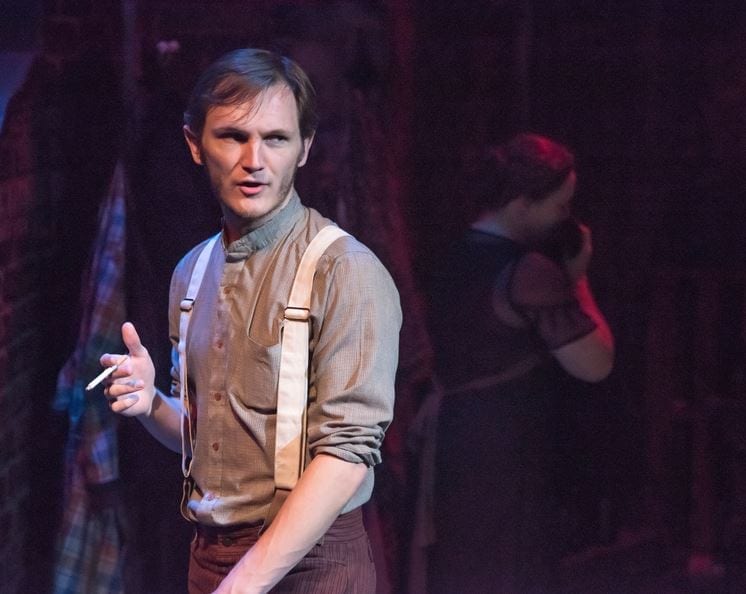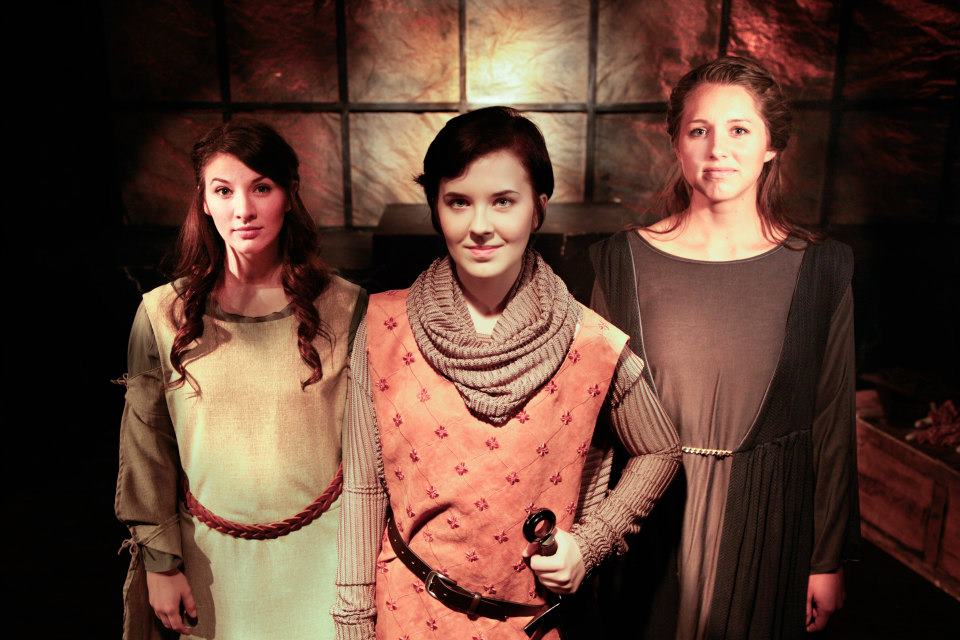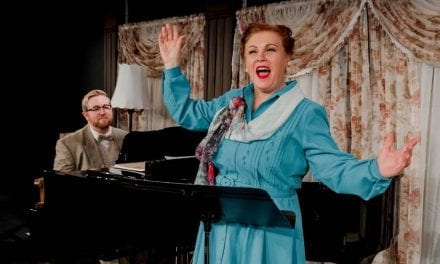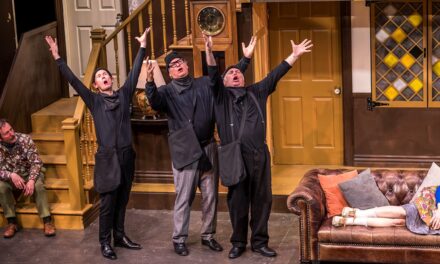CENTERVILLE — The distinctive American voice of Tennessee Williams was first heard on the stage seven decades ago. In that time, the eccentric playwright has been known for his tragic heroines, gripping family dramas, and slices of authentic Southern culture. All of these hallmarks of Williams’s work are fully developed in his first professional play, The Glass Menagerie, playing now at CenterPoint Legacy Theatre.
The Glass Menagerie is a “memory play” in which Tom Wingfield tells the story of his life with his mother, Amanda, and his sister, Laura. Amanda is an old southern belle that clings to her old days of glory when she was young and popular. Laura is a “peculiar” young woman who is painfully shy, walks with a limp, and struggles with education. Amanda’s most ardent desire is for her daughter to marry a respectable man who can take care of her. Laura’s prospects seem bleak until Jim, a “gentleman caller” and co-worker of Tom’s, visits for dinner.
As the director of this production, Jan Williams Smith excelled most at highlighting the humor of the script, which made a normally somber evening more enjoyable. Additionally, Smith has thoroughly mastered the mechanics of directing. However, Smith failed to guide her actors through the subtext of the script. As a result, most of the performances were surface-level, and most of the cast did not create multi-dimensional characters.
The strongest member of the cast was Jennie Richardson, who played Amanda Wingfield. Richardson embodied the faded woman who was reliving her dreams through her daughter, with her best moments being when she reminisced about the many gentleman callers she had during her youth and when she meets Jim. Richardson was delightful when she would talk ceaselessly about Amanda’s plans for Laura without regard for how the other characters felt about her or her aspirations.
Another noteworthy performance was from Niki Waite as Laura. Waite was impressive when she showed the anxiety Laura had about meeting strangers or attending classes. I also enjoyed the way Waite made Laura submissive and eager to deflect attention from herself when confronted by her mother. The only weak aspect of Waite’s work was that she often did not show the extent of Laura’s intellectual disability (which her family only refers to as a “peculiarity”). As a result, Laura was not as childlike as the script indicates.
Berlin Schlegel as Tom created a performance that was fatally flawed: he played Tom as a nice guy—which is at odds with the character’s final actions. Schlegel also made Tom seemed amused by his mother’s delusions and embarrassing behavior, rather than annoyed. This made Tom’s outbursts and efforts to spend time away from his family seem odd and artificial. I also found Schlegel to be too clean and articulate to be a believable gruff warehouse worker and possible alcoholic. Finally, Schlegel has a 21st century tattoo on his arm that was distracting in two scenes in which his sleeves were rolled up, a problem that can probably be easily fixed with some make-up. Lest any readers think I’m piling on Schlegel needlessly, I believe that it is important to note that the role of Tom is the central, most important role in The Glass Menagerie; any shortcoming of an actor’s performance in this role has repercussions for the entire play.
The last cast member, Derek Walden, played gentleman caller Jim O’Connor with a cordiality and warmth that relieved some of the tension in the Wingfield home. The eager, ambitious nature of Jim was a nice contrast with the members of the Wingfield family, and Walden’s first entrance brought an enjoyable change in the emotion of the play. My biggest disappointment in Walden’s performance was that Jim’s conversation with Laura seemed rushed, which made it difficult to enjoy the romantic setting of a candlelit chat. This could have been a result of the director’s desire to maintain the quick pace of the play, but it came at the cost of reducing the potential for an emotional connection between the audience and Jim.
One of the most memorable aspects of this production is Brian Hahn‘s set design, which contrasted the opulence of a more prosperous time for the Wingfield family with their impoverished circumstances during the Great Depression. Hahn had important words from the script (like “crippled,” “remember,” and “glass”) chalked on the upstage walls serving as a constant reminder of the themes of Williams’s script. Hahn’s design was complemented nicely by Jennie Richardson’s costume designs, which emphasized the drab day-to-day nature of the Wingfields’ existence. Richardson, though, gave Laura a fine, blue springlike dress that was a refreshing splash of color; it also drew attention to Waite’s beauty and showed the lengths to which Amanda would go to get her daughter a husband.
Although not a perfect show, this production of The Glass Menagerie is strong enough to still be beautiful. Like one of Laura’s glass animal figurines, CenterPoint’s production has an elegance that can both captivate and entertain the careful viewer. Smith and her cast have created a production that stays faithful to Williams’s script and serves the tastes and preferences of a modern audience.









